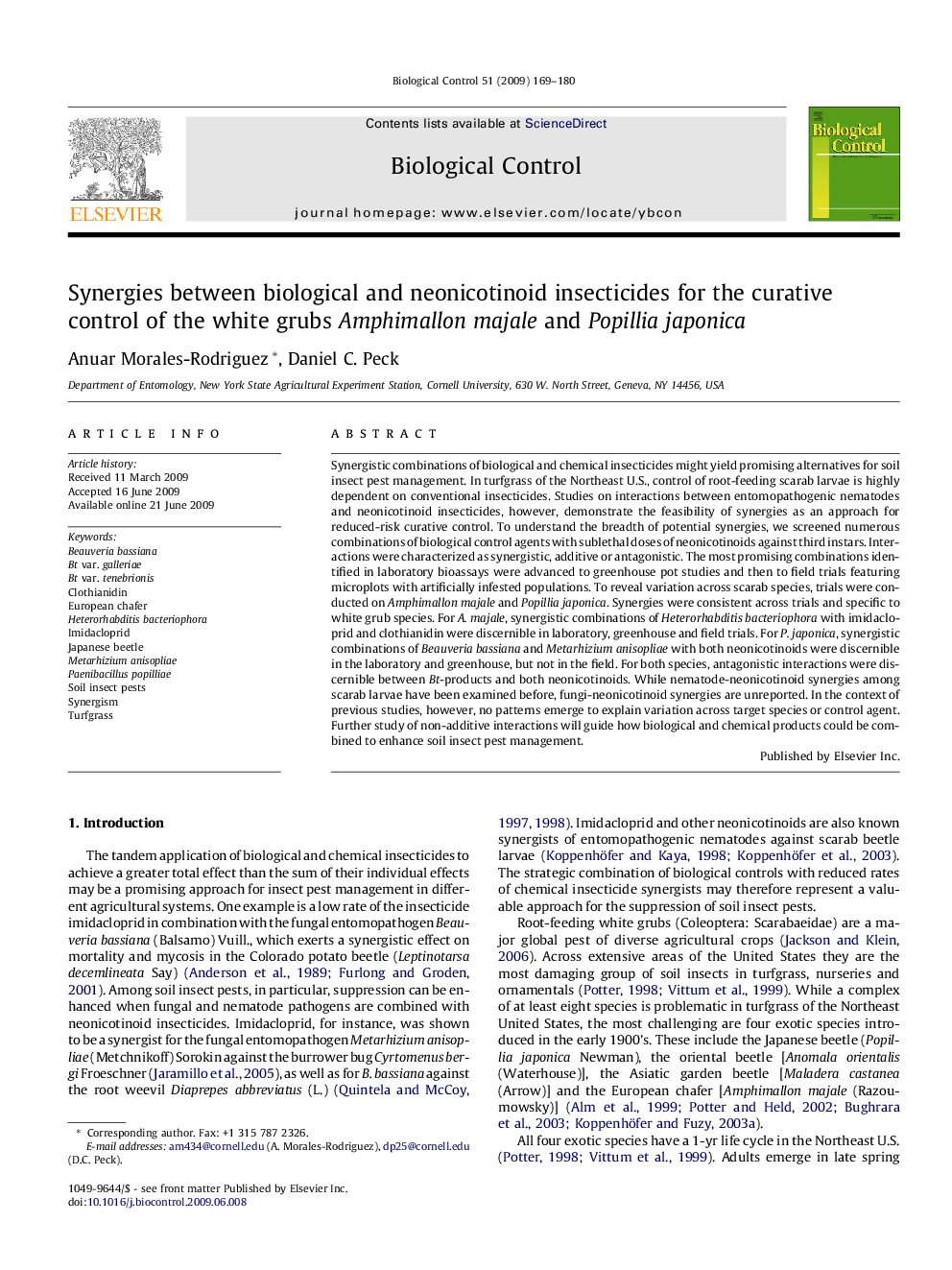| Article ID | Journal | Published Year | Pages | File Type |
|---|---|---|---|---|
| 4504527 | Biological Control | 2009 | 12 Pages |
Synergistic combinations of biological and chemical insecticides might yield promising alternatives for soil insect pest management. In turfgrass of the Northeast U.S., control of root-feeding scarab larvae is highly dependent on conventional insecticides. Studies on interactions between entomopathogenic nematodes and neonicotinoid insecticides, however, demonstrate the feasibility of synergies as an approach for reduced-risk curative control. To understand the breadth of potential synergies, we screened numerous combinations of biological control agents with sublethal doses of neonicotinoids against third instars. Interactions were characterized as synergistic, additive or antagonistic. The most promising combinations identified in laboratory bioassays were advanced to greenhouse pot studies and then to field trials featuring microplots with artificially infested populations. To reveal variation across scarab species, trials were conducted on Amphimallon majale and Popillia japonica. Synergies were consistent across trials and specific to white grub species. For A. majale, synergistic combinations of Heterorhabditis bacteriophora with imidacloprid and clothianidin were discernible in laboratory, greenhouse and field trials. For P. japonica, synergistic combinations of Beauveria bassiana and Metarhizium anisopliae with both neonicotinoids were discernible in the laboratory and greenhouse, but not in the field. For both species, antagonistic interactions were discernible between Bt-products and both neonicotinoids. While nematode-neonicotinoid synergies among scarab larvae have been examined before, fungi-neonicotinoid synergies are unreported. In the context of previous studies, however, no patterns emerge to explain variation across target species or control agent. Further study of non-additive interactions will guide how biological and chemical products could be combined to enhance soil insect pest management.
